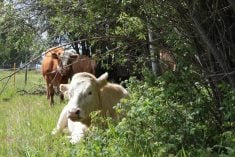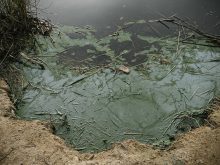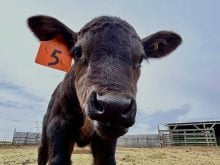Progress generally makes things easier and more efficient but this has not been the case with CFIA veterinary accreditation and the processes for testing and getting approval to export cattle.
As a result, many veterinarians — especially those approaching retirement — are letting their CFIA accreditation expire. I now hear of a real shortage of veterinarians approved to do hormone-free (HF) certification for cattle being cleared for shipment to the European Union.
Often when any new testing regime is started by a small group of producers, veterinarians have to weigh the potential number of clients, the effort to get accredited and the paperwork involved.
Read Also

Cancer agency reclassifies another herbicide ‘probably carcinogenic’
The WHO’s cancer research agency has now put atrazine, a herbicide well known to corn growers, in the same potential-hazard category where the agency put glyphosate.
Fortunately, the paperwork and processes for the HF program are relatively minimal. However, if veterinarians need to travel from several practices away to inspect cattle, mileage costs add up and quite frankly most veterinary clinics are short staffed. In my mind, much of testing for TB or brucellosis, or bleeding for EIA (Coggins testing in horses) could be done by qualified technicians at the clinics.
These are all technical procedures and the very CFIA people who do them in reportable disease traceouts are often not veterinarians either. They are often inspectors and only some are actually trained technicians. Why the double standard between what the CFIA can do and accredited practices can do?
If the HF program takes off or we need to do more routine testing for brucellosis, tuberculosis and other diseases, we need to minimize and simplify paperwork. We need to allow capable technicians to perform the technical procedures and consider faxed copies of results as legal documents.
Too much redundancy
Costs to veterinarians for many of these procedures are very high because of the bureaucratic redundancy in our system, and the costs to the client can also get very high. In the last big traceout with TB cases in southern Alberta, I suggested the use of accredited veterinarians who knew the clients, the area and the handling systems. They could have sped up the processes considerably, provided the manpower was available. Many clinics cannot spare veterinarians, especially at certain times of the year.
Even testing bulls before entering an AI stud can be expensive. Blood has to be drawn for many different tests and shipped to four different labs across the country, with each test needing an individual sample and paperwork. This all takes money, courier charges and time, plus results may take up to 10 days to two weeks to receive.
The CFIA is finally very close to accepting a simplified one-step blood TB test which would save time and improve animal welfare greatly as no cattle or bison would need to be run through a second time 72 hours later for the TB test to be read.
We also need the CFIA to practice what they preach on animal welfare. Now with CCIA tags available, it is ludicrous to think cattle need to also be branded with a “CAN” just to go across the border to be fed for a few months. The branding stipulation did not apply to U.S. cattle coming our way.
In a similar matter, the new transportation regulations are quite doable but long waits for cattle liners at the border during hot days hardly seem necessary when accredited vets have already completed all the paperwork. In my opinion, the need for cattle to be unloaded and loaded again at the border does not pass the animal welfare sniff test.
Also, truckers need to load and go, and not wait to travel in a convoy when big groups of cattle are moved. We must work co-operatively with producers and CFIA-accredited vets to streamline the export processes. Onerous regulations simply act as a trade barrier and everyone loses.
In a perfect world, large-animal veterinary technicians could be trained and accredited to do much of this testing work under the supervision of a veterinarian.
Most of the CFIA export work is quite technical and the diagnosis of blood tests is made by the lab. The only thing that is perhaps a bit subjective is the interpretation of the TB caudal fold test. However, if CFIA adopts the new simplified blood test that gives an objective yes or no answer.
All these suggestions are in the name of efficiency while still maintaining our good export markets through credible work. I am encouraging our large-animal veterinarians to become accredited and hopefully the process can become more streamlined especially together with veterinary technicians can help us serve the cattle industry.















